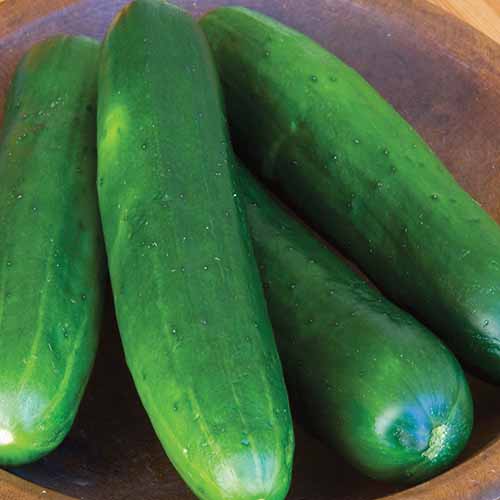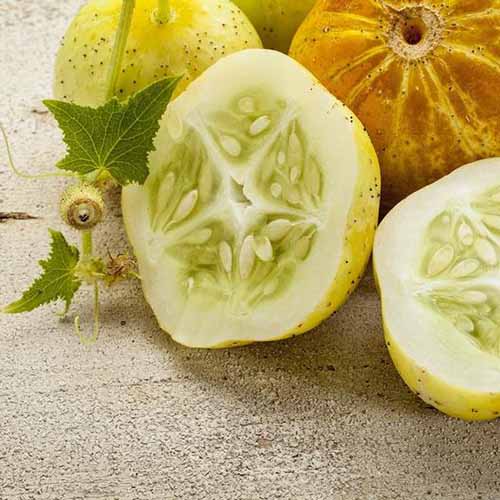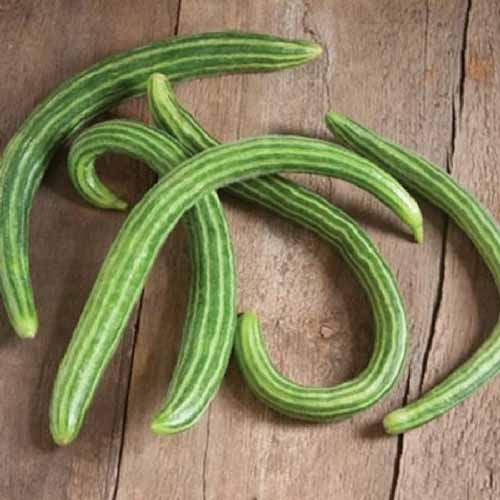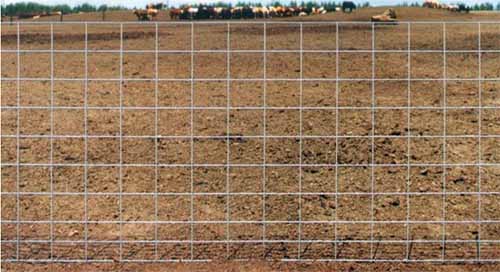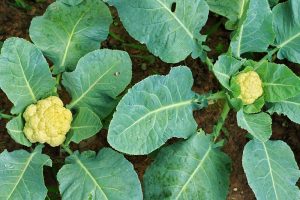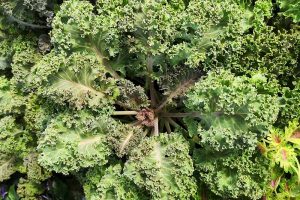As the Robert Frost poem “Mending Wall” says, “Good fences make good neighbors.”
They also make a good support for vining cucumbers! Using fences to grow Cucumis sativus saves space, and may provide you with one of the few privacy screens that can deliver a bumper crop.
If you don’t have a suitable structure already in place, there are also advantages to installing a panel or repurposing a gate for some cucurbit aerial gardening.
Not sure you’re ready for the full-scale wall of vines dangling various slicers and picklers midsummer?

We link to vendors to help you find relevant products. If you buy from one of our links, we may earn a commission.
If you’re willing to be convinced, follow along as I share some of the advantages of this planting method, along with suggestions for varieties to grow and materials to select.
And if you’re already onboard with the idea, I’ll also be providing sowing, transplant, and maintenance how-tos.
Here’s what to expect:
What You’ll Learn
Advantages of Aerial Gardening
Trellising vining vegetables offers many advantages, especially for homegrown cucumbers.
These garden favorites produce mightily, but trailing over the ground or spreading a couple of feet in each direction as bush plants, they take up a lot of space.
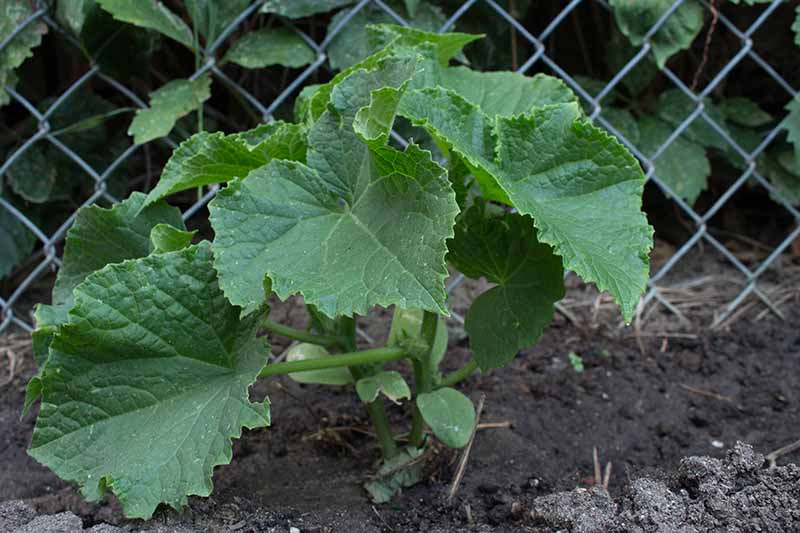
Train them up vertically with any type of support and you can reclaim that space on the ground.
This tactic also provides the airflow they need to fruit and avoid numerous diseases caused by overly moist conditions – or spread via wet leaves.
By growing cucumbers on a fence, you won’t need to till, water, feed, or mulch as much soil surface as you do for bush varieties, either.
These particular vining vegetables also produce more fruit throughout the season than other cultivars.
This is partly because bush varieties tend to yield their entire harvest over the space of a few weeks, while the vines are indeterminate and have a longer harvest window.
Also, vines are simply longer and each plant produces more blooms. They are famed for their ability to deliver bumper crops.
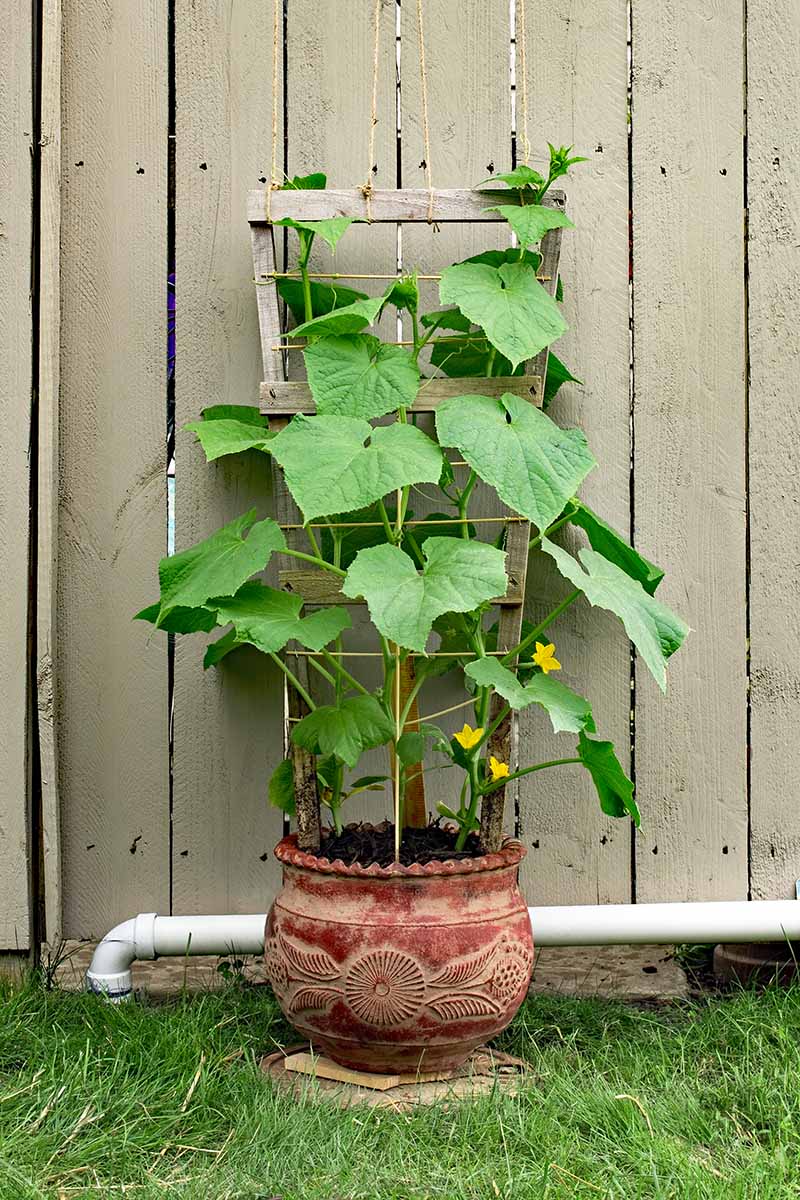
There are a couple of other pluses to getting your cucumber plants up and off the ground.
The fruits are easier to keep clean, for example, and folks like me who don’t like to bend or crouch will appreciate being able to spot ripe fruits and pick them at waist or eye level, or even a little higher.
And the slugs that love to nosh on bush varieties can’t really access the taller foliage or fruits, which is a huge advantage.
(Sorry, cucumber beetles can still be an issue. Apparently, they are not afraid of heights.)
In fairness, I will mention a couple of disadvantages to the aerial approach. For one, bush varieties tend to mature more quickly, usually between 45 and 55 days compared to the vining types at 50 to 75 days.
If you live in an area with a short growing season for warm-weather vegetables, this could be a drawback.
Also, while this growing approach may provide an attractive privacy screen, if the vines wilt or die, that can be a pretty unattractive sight for you and the neighbors.
You can compensate by growing them on wire fencing that’s coated to make dead vine removal simple.
But if you know you won’t be able to keep up with that maintenance chore, better to plant bush types or grow on a fence the public doesn’t view.
Ready to tap these advantages? Start by selecting one of the best cultivars to grow aerially.
Choose a Cultivar
It’s always fun to choose vegetable varieties to grow, but in this case, you’ll need to prioritize the practical aspects.
First, find a vining variety, not a bush type.
For more information on distinguishing between the two, see our guide.
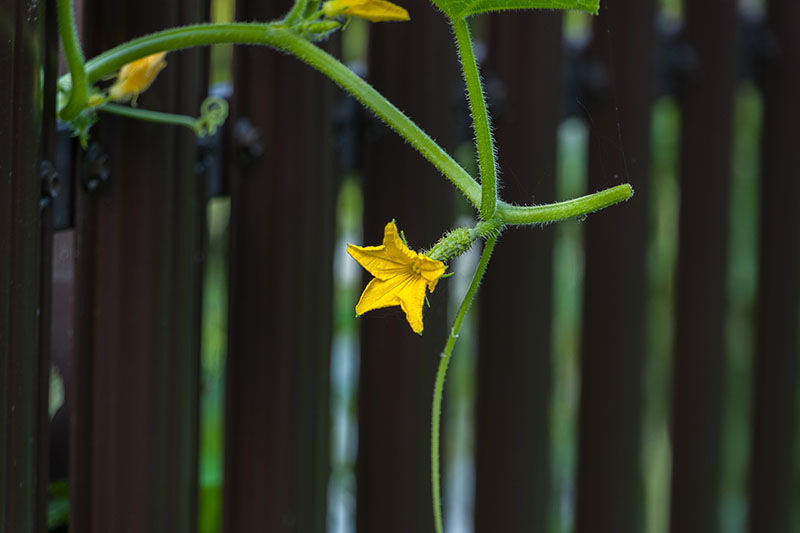
Next, make sure to note the days to maturity for any variety you’re considering, so you’ll know if you have enough time to grow these vegetable garden overachievers.
And note the predicted length of the vine. Some types will grow seven to 10 or even 12 feet, and they won’t do well on a shorter fence.
Here are three of my favorites to grow aerially:
Burpless Beauty
Not all vining cukes are heirlooms, and this hybrid offers extra disease resistance and lavish harvests. The vines grow three or four feet tall and need support – all those fruits can get pretty heavy!
It produces crispy, thin-skinned, eight-inch cukes in profusion starting 60 days from sowing.
‘Burpless Beauty’ seeds are available in 70-seed packets from Burpee.
Lemon
A suitable selection for folks who love to pickle and those with shorter fences, the heirloom ‘Lemon’ grows three to four feet tall and produces tennis ball-size, round fruits with sweet, mild flesh.
‘Lemon’ seeds are available in various packet sizes from Eden Brothers.
Painted Serpent
Also known as ‘Striped Armenian,’ ‘Painted Serpent’ is a “no-peel” variety. Its fruits are ridged and green with lighter stripes, best harvested at eight to 16 inches, but able to grow to three feet long.
The plants reach up and up, attaining heights from six to eight feet. They produce fruit 60 to 65 days from transplant.
‘Painted Serpent’ seeds are available in packets in various sizes up to one ounce from Eden Brothers.
Select a Fence
If you already have fencing in place, take a look at it for growing cucumbers!
Lots of different types will work to support enthusiastic C. sativus vines at every stage of growing.
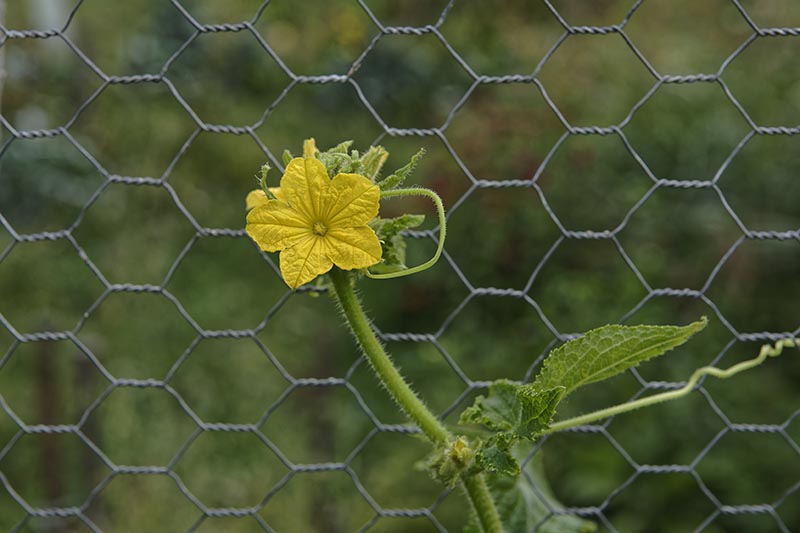
But first, you’ll want to eliminate any that aren’t tall enough. If the plant reaches the top of its support and grows taller, you’ll have a tangled mess.
Top-heavy vines might also topple to the ground, which can uproot the plant and kill it.
As for fence material, my favorite is coated PVC wire fence with four- to six-inch openings the plants can grab as they grow onward and upward.
The coating makes it much easier to remove the vine detritus at season’s end.
You can make uncoated wire fence work, too, if that’s what you have. It’s just harder to clean up at the end of the growing season, that’s all.
I’d encourage you to eye even your elegant wrought-iron fences or wood latticework that surrounds your patio.
Of course, it depends on your attitude towards garden and landscape design. But if you’re comfortable with a casual, leafy annual covering on one or more of the barriers to your property or garden, something that’s already been installed is handy.
When the fence has vertical openings, like those between the bars of a wrought-iron fence, you may need to string additional support in the form of wire or sisal twine horizontally to provide something for the vines to latch on to.
Be sure you’re okay with that look for the weeks before the foliage covers the less attractive wires before opting for more formal fencing for this process.
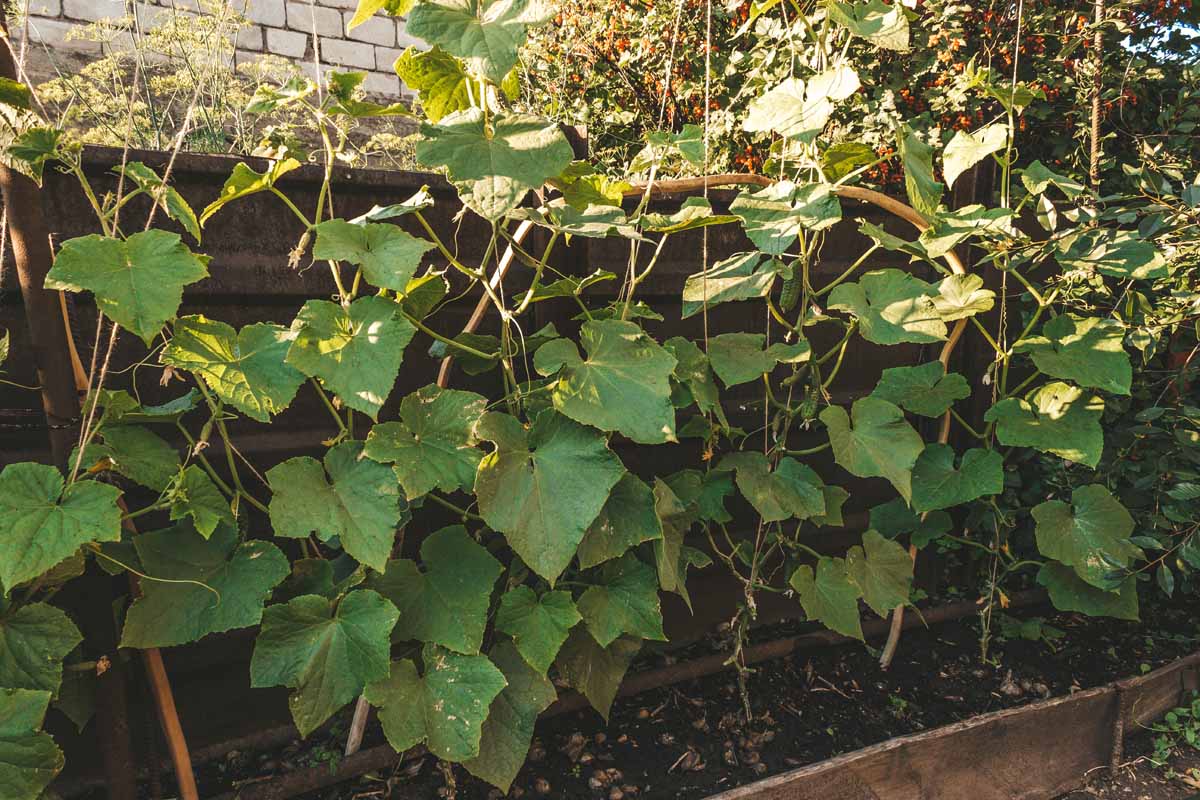
Flat boards will always require the addition of strings, a trellis, or fence panels so the cukes will have something to grab onto as they ascend. You can attach these to the fence using screws or wire eyes, or place or prop them directly in front of the fence on the side that receives full sun.
While it may seem like it defeats the purpose to grow cukes near – not directly on – a fence, it can block drafts and create the attractive illusion that the foliage is growing on the permanent landscape element.
The barrier behind it makes the netting or wire grid less likely to topple, too, at least on the side close to the fence.
One consideration when you employ a fence constructed from treated lumber: Make sure the boards weren’t treated before 2004, when the EPA restricted treatments that included arsenic or other toxic chemicals in favor of ACQ, a treatment that does not include those toxic elements.
You can also incorporate additional trellises, poles, wires, or wire or net panels to make up for limitations on other fencing options.
If a stationary fence is shorter than you’d like, you can stake a trellis panel the proper height behind the fence, on the side that won’t be in public view.
The vines then start their upward journey on the permanent structure, and scale the piece above it as needed towards the end of the growing cycle.
This Modular Trellis Net Kit from Burpee will do the job nicely. It is 62 inches wide and 69 inches tall, and comes with a spool of twine and tent spikes you can use to make it strong enough to support these vigorous vines.
You can also add height without sacrificing aesthetics by pounding in several taller bamboo stakes along the shorter structure.
The tippy-tops of the vines can attach directly to the poles, or you can fortify them with pieces of netting or chicken wire strung along the top two feet of the poles.
If you want to use a board fence that’s too flat for vines to wind around, consider using a drill to place wire eyes on the fence posts, and then stringing stainless steel wire cable rope laterally across the sections of board.
That gives the tendrils somewhere to attach.
String the first set of wire about six inches off the ground, and then add more strands parallel to the first. Space them about eight inches apart, with the top lateral wire positioned about six inches from the top of the fence.
The TooTaci Turnbuckle wire tensioner trellis wire kit includes all the needed hardware and 100 feet of PVC-coated trellis wire. It’s available from Amazon.

TooTaci Turnbuckle Wire Tensioner Kit
Or, line a fence that has openings that are too large – or more than about six inches in either direction – with netting, trellis wire, or cattle panels. If the permanent structure is a wire gauge, lattice, or picket fence, you can complete this job with zip ties.
A lightweight cattle panel can also bridge the gaps when a flat wooden structure has too much space between boards.
Rest it on brackets you drill into the posts about four inches from the top, or hang it with wire or sturdy string from wire eyes drilled into the top of the rail.
A 16-foot, four-gauge wire cattle panel, available from Home Depot, is one option.
Each has a galvanized coating that resists corrosion, and four- and six-inch vertical openings that are suitable for aerial vines to climb on.
For any of these add-ons, only use materials you can remove at season’s end.
You wouldn’t want to encourage disease, bugs, or depleted soil by planting cucumbers in the same place two years in a row, so the additions will need to move to a new space next year.
As a last resort, you can also install a fence, or a segment of one, solely for the purpose of growing aerial vegetables. If you take this approach, make sure to place it in full sun, and in an area of the yard where you don’t spray herbicides or pesticides.
The reason I say “last resort” is that these permanent structures are difficult to remove and place somewhere else, especially compared to vegetable supports like wire cages, folding trellises, ladders, or teepees made of bamboo.
And even if it’s eye-catching and sturdy, you can only use a cucumber fence for one season before rotating crops.
So if you don’t have another non-cucurbit crop like tomatoes or pole beans that you want to grow in that space the next year, I would recommend forgoing the construction project and choosing a more portable support instead.
Find the Best Site
Some of the site requirements for aerial cucumbers are non-negotiable. You must plant them where they’ll receive full sun, for example – at least six hours a day.
Usually, though, you can work to correct conditions that are inhospitable. It’s possible to amend the soil to the preferred pH of 6.0 to 6.8, for example, and to make it well-draining by adding plenty of aged organic matter well ahead of sowing or transplanting.
Or if the dirt is impossible to improve adequately, consider planting cucumbers in containers that abut the fence, and train the vines from there.
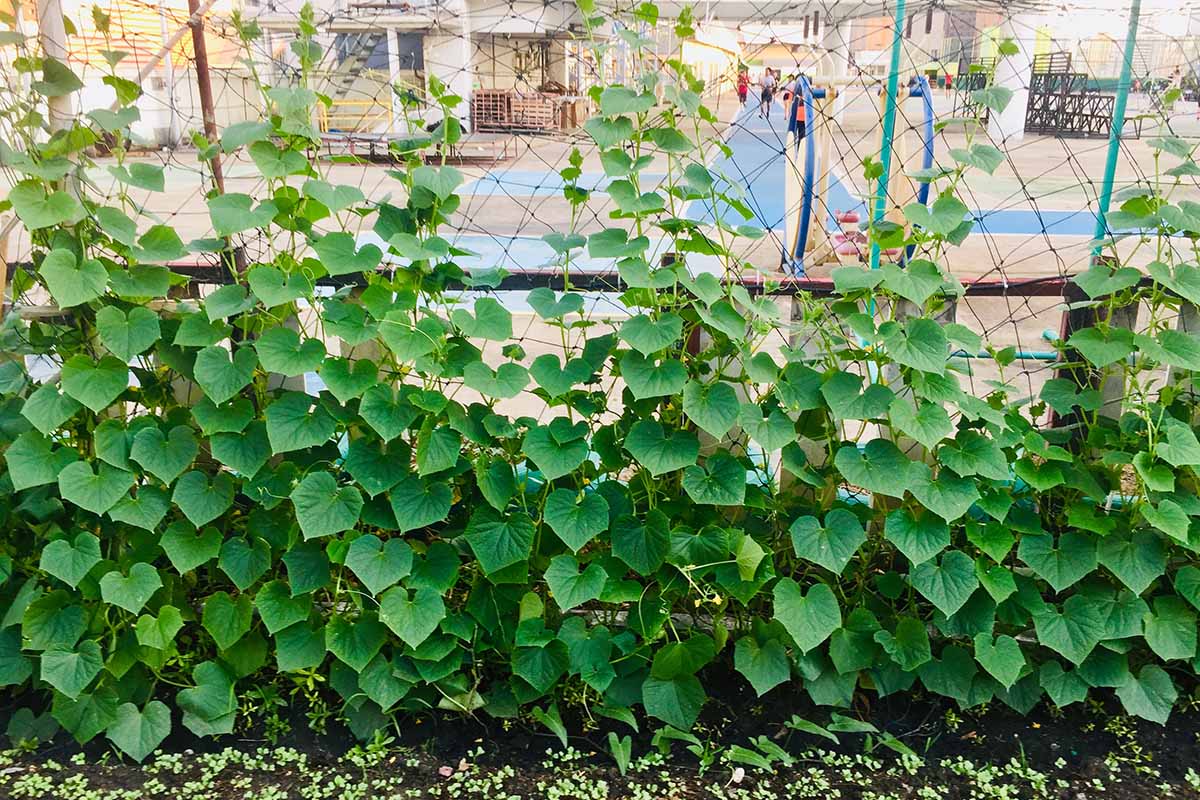
Just consider whether you’re up for the extra watering and fertilizing necessary for growing such a vigorous vine in a pot or window box.
Always steer clear of locations close to a lawn that’s been treated chemically – yours, or a neighbor’s.
While you can grow varieties that are parthenocarpic, meaning they don’t need pollinating from insects, that can limit your choices.
Remember, some homeowners and lawn services use herbicides that can leach into the soil and keep any plant from growing, weed or not.
Speaking of neighbors, remember to evaluate what’s on the other side of the fence you want to use if one side rests on a property that doesn’t belong to you.
It’s a good idea to get permission to grow vegetables on a shared border, and to ascertain whether the neighbor is in the habit of spraying chemicals that could harm your crop.
We’re on great terms with our neighbor James, but I think we wore out his patience when my husband Wade had to hop the fence that separates our two backyards to harvest cucumbers three or four times a week in peak picking season.
Which leads me to one more caution: Remember that these veggies are vigorous, require ample water, and need constant harvesting to keep the produce coming.
While it’s great for a fence that’s in a remote spot to serve double-duty, especially if it’s in a location with the requisite soil and sun requirements, make sure only to plant somewhere you can readily attend to the plants.
When the plot is out of sight and out of mind, you’ll be amazed at how quickly the vines wilt from lack of water, and how fast the fruits become oversized and inedible.
Sow or Transplant
There are just a couple of extra considerations to keep in mind when you’re propagating this vine aerially.
First, you’ll want to have all of your fencing in place ahead of planting, so you don’t disturb fragile roots or seedlings trying to install it later.

And precision is important. You’ll want seeds to sprout about four inches away from the fence, and about 12 inches from each other.
You may want to start the seeds indoors to transplant, so you’ll know exactly which seedlings have sprouted, instead of potentially leaving a gap in the vertical space outdoors.
That’s what I do. I use peat pots that go straight into the soil with the seedlings so I don’t disturb the vulnerable roots when I transplant.
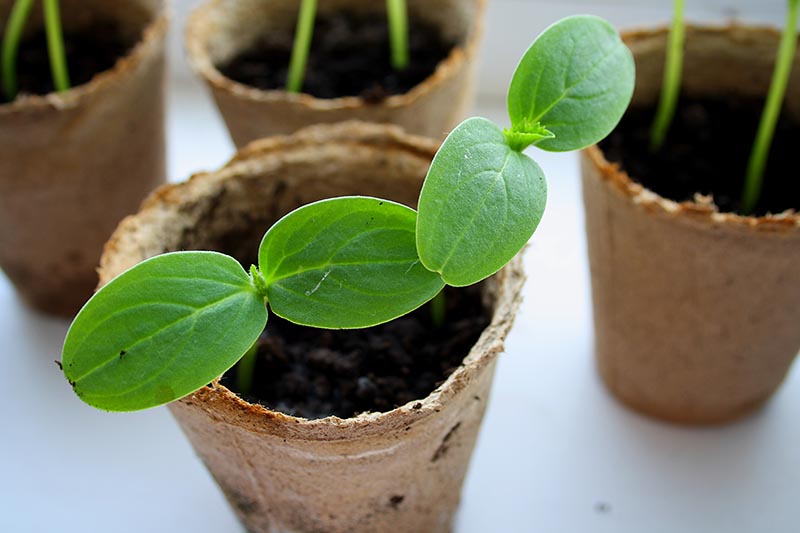
I sow just one seed half an inch deep in each biodegradable container, and then plant the healthiest sprouts. I time this for about three weeks ahead of planting out, when the night air and soil are warm enough.
If you direct-sow your seeds, plant them in pairs about half an inch apart and half an inch deep, spaced at one-foot intervals.
For more tips on sowing and caring for any variety of cucumber, check out our guide.
Once the seeds have sprouted and formed two sets of true leaves, clip the weaker one of each pair at the soil line, and take it to the compost pile.
When the vines reach four or five inches tall, they’ll need you to point them in the right direction to start climbing.
Gently guide the top of each seedling to the fence (if it has suitable openings) or wires (if you’ve attached them to flat boards). If you need to, loosely tie the top two inches of the vine to the wire or opening with a bit of sisal twine.
After it starts growing in the right direction, it will start grabbing onto the tethers or openings itself. Usually, it won’t require any more ties unless it keeps trying to grow laterally.
Care for Aerial Cucumbers
For the most part, once they’re scaling the supports, cucumbers growing on a fence need the same type of upkeep as the ones growing in a raised bed or garden plot.
You’ll need to make sure they receive at least an inch of water per week in the warm months if the rain doesn’t provide it, for example.
It’s also a good idea to mulch them a second time midway through the season to retain moisture and suppress weeds. (While you’re at it, be sure to congratulate yourself on how little of the patch you must maintain since you’re growing them vertically.)
As the harvest starts coming in, stay on top of your picking chores. Not only will removing the mature fruits promptly mean they’ll taste better, encouraging new fruits to mature in the process, it will keep the vines from getting topheavy and pulling away from the supports.
Be vigilant! While one baseball-bat-sized cuke that escapes notice isn’t that big of a deal when it’s growing along the ground, in the air at the top of a vine it can pull down the whole thing.
Be careful when you pick, too. Use scissors instead of tugging at the stem, since one strong tug can pull up the roots that are supporting your one-vine bumper crop.
Looking Up to Your Cucumber Crop
This may be one project that succeeds beyond your most optimistic projections. Vines grown aerially can produce bumper crops ready to harvest over the course of more than a month.
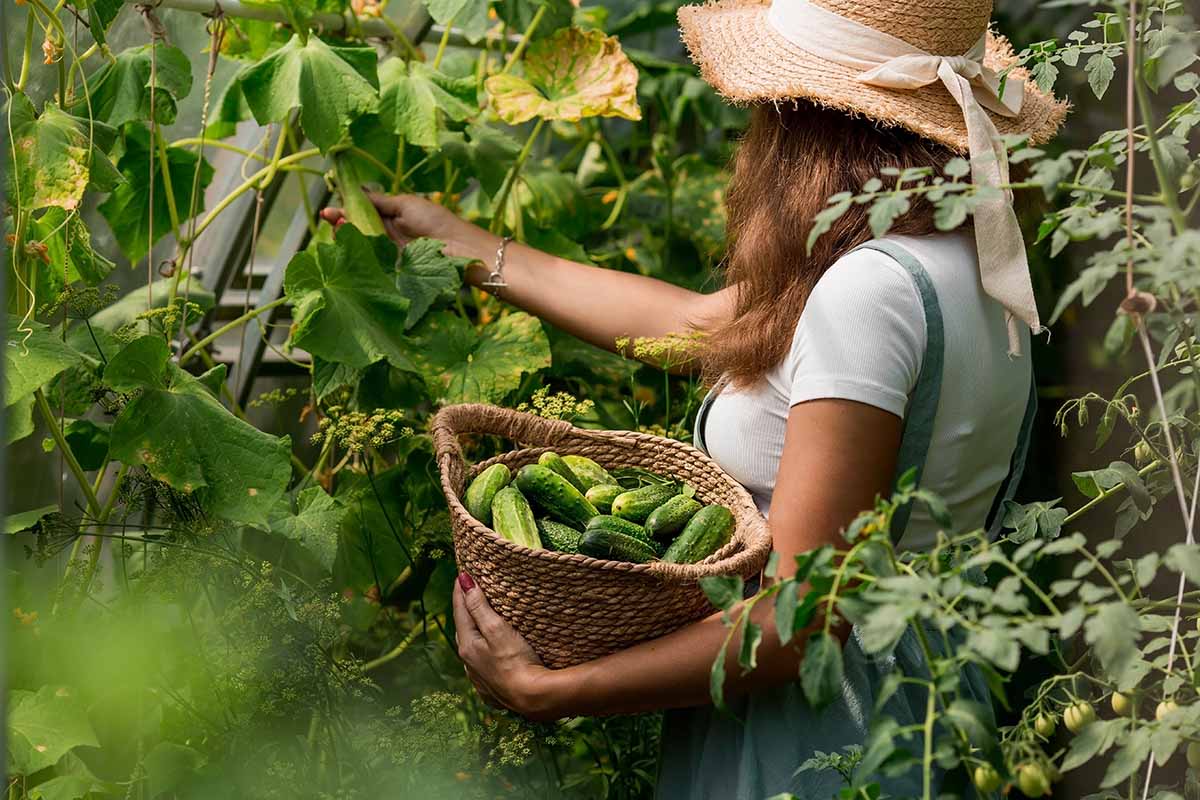
To anticipate the best case scenario, be sure to have pickling recipes at the ready and plenty of friends who will welcome your extras on alert starting in late July.
If you have any questions or maybe a thought about your own experience growing C. sativus aerially, kindly share them in the comments section below.
Then, to learn even more about growing and caring for this vegetable garden superstar, check out these cucumber guides next:
